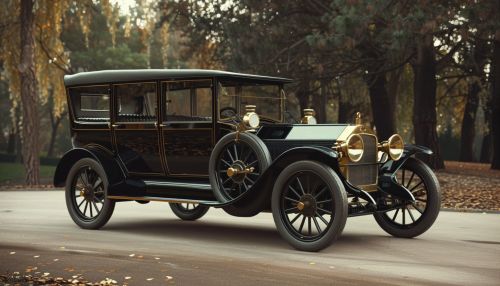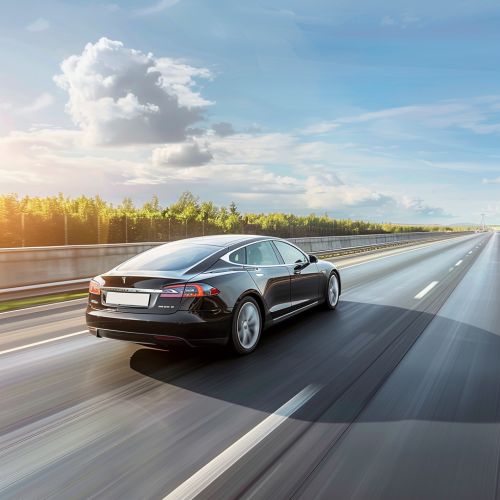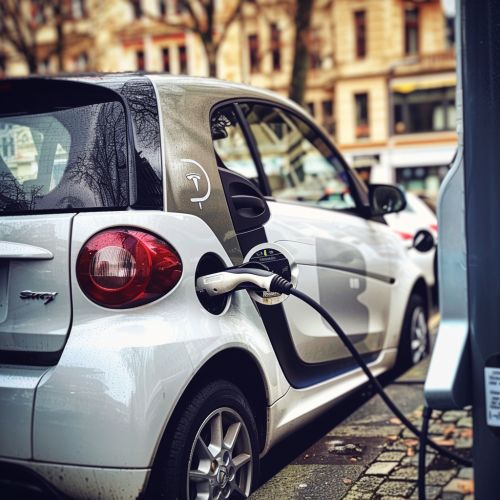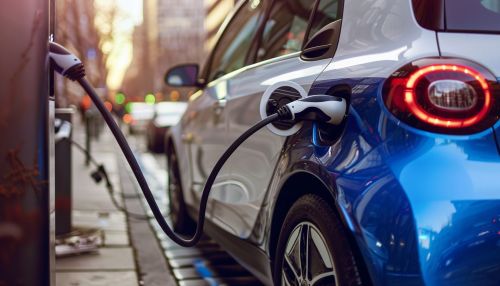Automobile: Difference between revisions
(Created page with "== Overview == The Automobile, often referred to as a car, is a wheeled motor vehicle used for transportation. Originating from the Greek word 'autos' (self) and the Latin word 'mobilis' (movable), it refers to a vehicle that moves itself, rather than being pulled or pushed by a separate animal or another vehicle. The automobile as we know it was not invented in a single day by a single inventor. Rather, over the years, various people contributed to the development o...") |
No edit summary |
||
| Line 1: | Line 1: | ||
== | == Origins and Evolution == | ||
[[ | The [[horseless carriage|horseless carriage]], as the earliest form of the automobile was known, was a revolutionary invention that altered the course of human history. The first known instance of a self-propelled vehicle was created by [[Nicolas-Joseph Cugnot|Nicolas-Joseph Cugnot]] in 1769, a steam-powered tricycle designed for hauling artillery. | ||
[[ | |||
[[Image:Detail-71005.jpg|thumb|center|An early 20th century automobile, showcasing the transition from horse-drawn carriages.|class=only_on_mobile]] | |||
[[Image:Detail-71006.jpg|thumb|center|An early 20th century automobile, showcasing the transition from horse-drawn carriages.|class=only_on_desktop]] | |||
The invention of the [[internal combustion engine|internal combustion engine]] in the late 19th century marked a significant milestone in the evolution of the automobile. The engine, which utilized the explosive combustion of fuel to generate motion, was more efficient and compact than the steam engines used in the earliest automobiles. | |||
== | == Design and Functionality == | ||
== | The design of the automobile has evolved significantly over the centuries, from the rudimentary horseless carriages to the sleek, aerodynamic vehicles of today. The modern automobile consists of several key components, including the engine, transmission, suspension, braking system, and electrical system. | ||
The [[engine]] is the heart of the automobile, converting fuel into mechanical energy that propels the vehicle forward. The [[transmission]] is responsible for transferring this power to the wheels, while the [[suspension]] system ensures a smooth ride by absorbing shocks and vibrations from the road. | |||
== Impact on Society == | |||
The automobile has had a profound impact on society, transforming the way we live, work, and travel. It has facilitated the growth of suburbs, reshaped our cities, and revolutionized our transportation systems. The automobile has also played a significant role in global events, from the world wars to the oil crises of the 1970s. | |||
[[Image:Detail-71007.jpg|thumb|center|A modern car on a highway, symbolizing the impact of automobiles on society and transportation.|class=only_on_mobile]] | |||
[[Image:Detail-71008.jpg|thumb|center|A modern car on a highway, symbolizing the impact of automobiles on society and transportation.|class=only_on_desktop]] | |||
== Environmental Impact == | == Environmental Impact == | ||
While the automobile has brought numerous benefits, it has also had a significant environmental impact. Automobiles are a major source of [[air pollution]], contributing to smog, acid rain, and climate change. They also consume large amounts of non-renewable resources, particularly petroleum. | |||
== | In response to these concerns, there has been a growing interest in [[electric vehicles|electric vehicles (EVs)]], which produce zero tailpipe emissions and can be powered by renewable energy sources. However, the widespread adoption of EVs presents its own set of challenges, including the need for extensive charging infrastructure and the environmental impact of battery production. | ||
== Future Trends == | |||
The future of the automobile industry is likely to be shaped by several key trends, including the rise of electric vehicles, the development of [[autonomous vehicles|autonomous vehicles (AVs)]], and the growth of shared mobility services. | |||
Electric vehicles are expected to become increasingly prevalent as battery technology improves and charging infrastructure expands. Autonomous vehicles, which use advanced sensors and algorithms to navigate without human intervention, have the potential to transform our transportation systems and reduce traffic accidents. Shared mobility services, such as ride-hailing and car-sharing, offer a more efficient and sustainable alternative to private car ownership. | |||
[[Category:Transportation]] | [[Category:Transportation]] | ||
[[Category:Technology]] | [[Category:Technology]] | ||
[[Category: | [[Category:Environment]] | ||
== See Also == | |||
* [[Electric vehicles]] | |||
* [[Autonomous vehicles]] | |||
* [[Air pollution]] | |||
[[Image:Detail-71009.jpg|thumb|center|An electric car charging at a station, representing the future trends in automobile industry.|class=only_on_mobile]] | |||
[[Image:Detail-71010.jpg|thumb|center|An electric car charging at a station, representing the future trends in automobile industry.|class=only_on_desktop]] | |||
Revision as of 21:13, 22 April 2024
Origins and Evolution
The horseless carriage, as the earliest form of the automobile was known, was a revolutionary invention that altered the course of human history. The first known instance of a self-propelled vehicle was created by Nicolas-Joseph Cugnot in 1769, a steam-powered tricycle designed for hauling artillery.


The invention of the internal combustion engine in the late 19th century marked a significant milestone in the evolution of the automobile. The engine, which utilized the explosive combustion of fuel to generate motion, was more efficient and compact than the steam engines used in the earliest automobiles.
Design and Functionality
The design of the automobile has evolved significantly over the centuries, from the rudimentary horseless carriages to the sleek, aerodynamic vehicles of today. The modern automobile consists of several key components, including the engine, transmission, suspension, braking system, and electrical system.
The engine is the heart of the automobile, converting fuel into mechanical energy that propels the vehicle forward. The transmission is responsible for transferring this power to the wheels, while the suspension system ensures a smooth ride by absorbing shocks and vibrations from the road.
Impact on Society
The automobile has had a profound impact on society, transforming the way we live, work, and travel. It has facilitated the growth of suburbs, reshaped our cities, and revolutionized our transportation systems. The automobile has also played a significant role in global events, from the world wars to the oil crises of the 1970s.


Environmental Impact
While the automobile has brought numerous benefits, it has also had a significant environmental impact. Automobiles are a major source of air pollution, contributing to smog, acid rain, and climate change. They also consume large amounts of non-renewable resources, particularly petroleum.
In response to these concerns, there has been a growing interest in electric vehicles (EVs), which produce zero tailpipe emissions and can be powered by renewable energy sources. However, the widespread adoption of EVs presents its own set of challenges, including the need for extensive charging infrastructure and the environmental impact of battery production.
Future Trends
The future of the automobile industry is likely to be shaped by several key trends, including the rise of electric vehicles, the development of autonomous vehicles (AVs), and the growth of shared mobility services.
Electric vehicles are expected to become increasingly prevalent as battery technology improves and charging infrastructure expands. Autonomous vehicles, which use advanced sensors and algorithms to navigate without human intervention, have the potential to transform our transportation systems and reduce traffic accidents. Shared mobility services, such as ride-hailing and car-sharing, offer a more efficient and sustainable alternative to private car ownership.
See Also


